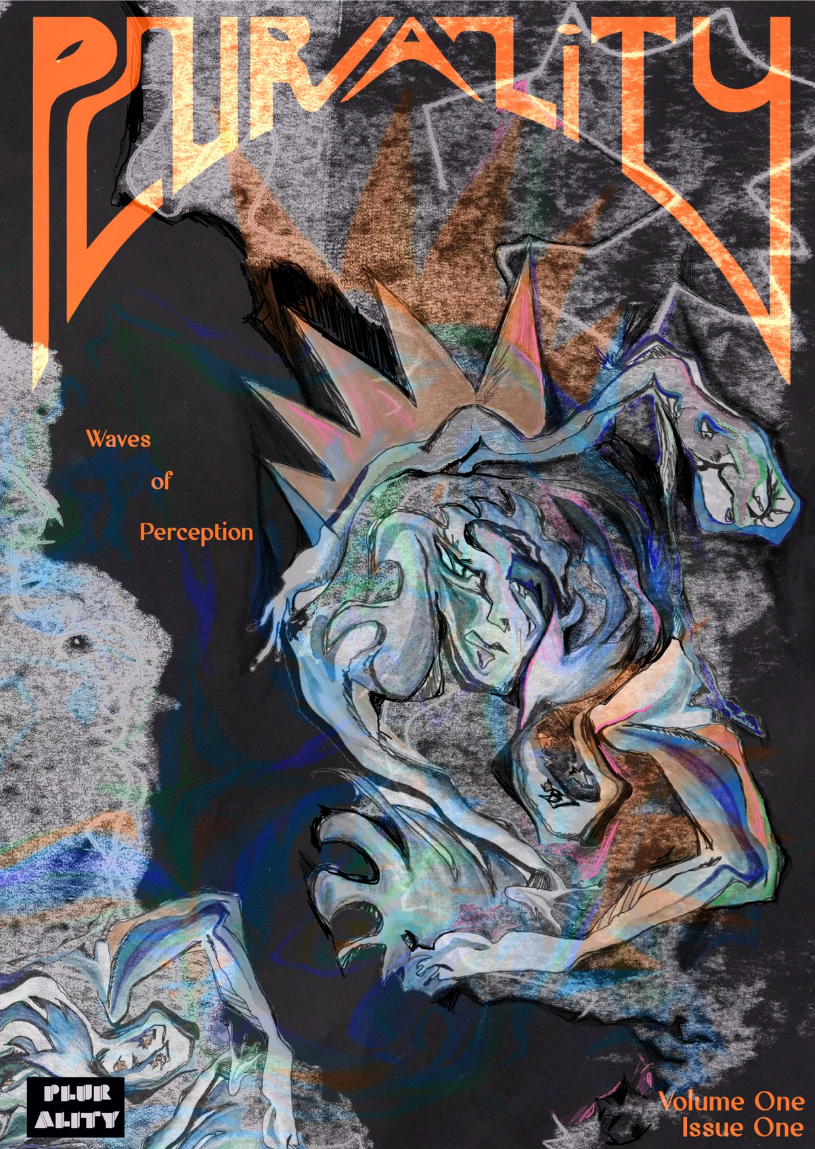Archives
-

Witness
Vol. 2 (2025)Plurality celebrated its first year anniversary this December, and it truly has been an incredible year for the publication. From conception to materialization to now having two issues published. I am grateful for the journey it has taken to come this far and the ways this publication has facilitated my personal growth in many ways. I hope that Plurality has succeeded in its goal of providing a space for undergraduate researchers to share in the study of intersectionality. Additionally, that this publication has been a learning ground for both editors and authors, as we work together to create something which will build the feminist literature.
The issue starts with Mia Taylor’s exploration of whether abolitionist spaces can provide a refuge from the infamous male gaze. Rounding out our Philosophy and Divinity section, we have A Hijazi who writes about how the defiance of Palestinian witness testimony creates historical continuity from sites of dispossession. For Art and Literature, we have Rose Devine who analyses the role of women as symbolic witnesses and repositories of desire in Marie de France’s Lanval. Jack Lyall discusses how Emmanuel Levanis’ conception of responsibility appears in Sylvia Plath’s The Bell Jar and Jean Rhys’ Good Morning, Midnight. Sommer Lugert, for our Social Sciences section, looks at how current frameworks of human trafficking lack intersectionality leading to the marginalisation of certain trafficking survivors. Analysing the Jinv resistance, Tongyu Hu provides an account of how to understand this radical feminist movement happening in China. Anna Braun, starts our History and Classics section, with a critical analysis of current narratives around northern Nigerian women in the context of Boko Haram and its related conflict, arguing that the framing of victimization overshadows women as witnesses and their diversity of experiences. Next, Melissa Kocacinar looks at how the memories of the Algerian diaspora put into question monolithic narratives of national identity in France. Yuna Watanabe uses the lens of orientalism to bear witness to the lost history of Japan’s premodern homosexual culture, nanshoku. For our musings section, we have Ruby Scott looking at online hate-speech using Baudrillard’s “Simulacra and Simulation” framework to argue how online commenters fail to witness the personhood of marginalised people. My sincerest thank you to our authors for submitting their work and being open to developing it into the drafts you see in this issue. I encourage you to spend time in acknowledging your momentus achievements as well as the way this process has hopefully helped you grow as a researcher.
Read our full issue here or scroll below to access individual articles.
-

Waves of Perception
Vol. 1 (2024)The first issue of Plurality is here 'Waves of Perception: The temporal nature of gender conception’ focuses on the nature of progress in society and how progress is felt at different levels throughout time, with the more marginalised of a movement often being unjustly sidelined or forgotten. It is about moments of progress and how our perceptions of gender have changed over time.
Our authors bring to light important discussions and issues, analysing them in connection with intersectionality. Beginning with Lucy Barrie’s analysis of the importance of modest dress being incorporated into the feminist project. Elizabeth Hamilton theorises how we can resist with words and the importance of anti-oppression speech. Rounding out our ‘Philosophy and Divinity’ section, we have Lily Roberts who explores whether feminist interpretations of the biblical story of Genesis are possible. For our ‘Art and Literature’ section, Julia Guzikowska explores how women writer’s have subverted patriarchal storytelling norms through the use of metafiction. Focusing on the representation of the female body in 90s pop culture and literature, Julia Owczarek looks at how female protagonists who do not reject their bodies are still unable to liberate themselves. Moving to the ‘Social Sciences’, Lea Kern looks at how Māori women’s experiences have been shaped by colonialism and patriarchy, and how indigenous feminisms such as Mana Wāhine have been important in capturing this positionality. Ellie Robertson gives a linguistic analysis on the possibility of removing gender from language. Using feminist and decolonial theoretical frameworks, Liza Yeroshkina analyses Russia’s decision to invade Ukraine. Focusing on how queerness affects temporal experiences, Izzie Atkinson argues how this could redefine how we think of historical progress. For our ‘History and Classics’ section, Adeline Cheung considers the importance of an intersectional approach for historians of empire. Eliza SInclair Kidd looks at critical inclusion of early feminists in the feminist historiography of geography focusing on Ellen Churchill Semple. Eve Coffey discusses the legal implications of virginity testing within the UK legislative environment in our ‘Law’ section. Finally we have our ‘Miscellaneous Musings’ beginning with Ruby Scott who analyses how TikTok and social media have changed what femininity means via choice feminism. Focusing on the muse in art, Martha Gane uses a gendered lens to analyse the role of musehood and artist. Abigail Nicoll brings important considerations of the importance of intersectionality within psychological research.
I am infinitely grateful for Plurality’s editors, for helping the author’s develop their voice and writing. Thank you to Maria for helping guide the editors and the development of the sections. This publication would not have been possible without Abby’s and our wonderful copy editors’ attention to detail. We received an incredible number of submissions for our first issue thanks to our talented marketing team. Thank you to Daisy, Marnie and Bessie, our wonderful artists for helping the issue develop into a gorgeous work to flip through with your eye-catching art pieces and cover design. It has been absolutely amazing to see the materialization of this project with the publication of this first issue and I am thrilled to have been a part of it. We are already working on our second issue ‘Witness’ and I am excited to see how this publication develops in the future.





